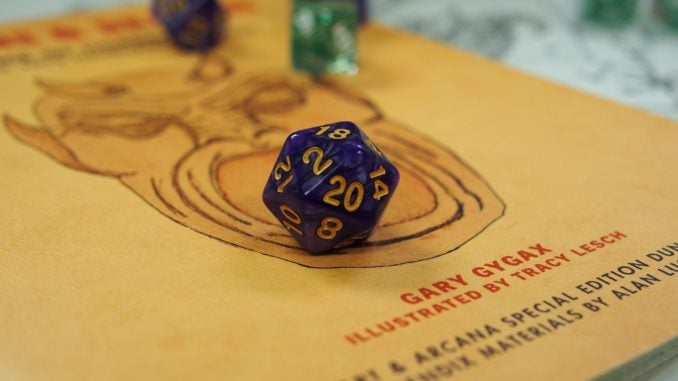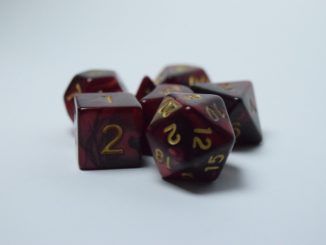
Building the character for your next D&D is going to require more than just picking a class and diving in. If you’ve selected a sorcerer, you’re also going to need to determine their sorcerous origin. This includes not only their backstory on how they obtained their arcane power, but also determines your subclass traits. Not all archetypes are created equal, however. Join us for our Sorcerer Subclasses 5E Rankings!
Updated for Dragonlance: Shadow of the Dragon Queen
Sorcerer Subclasses 5E Rankings
Unlike other classes with a broad range of options, there are currently only five subclasses for the sorcerer in 5E. There is good news, however. For starters, the sorcerer is a strong class regardless of your archetype. Additionally, none of the five are truly bad options. There are some winners and losers, however.
When determining our rankings, we focused primarily on optimization. We also considered the flavor of each subclass and the ease to roleplay them, but that is secondary. We also tend to pay closer attention to how these archetypes perform at lower levels. Most campaigns never reach level 20, so giving that equal weight to the level 1 traits doesn’t make sense. In the end, only one of these options truly lags behind the rest. While you can make them all work, there are also definite winners here. let’s dive in!
1. Divine Soul
Number one with a bullet on our list is Divine Soul. This subclass is great, to the point that it might be my favorite type of caster. It is essentially a merger between cleric and sorcerer, and works exceptionally well.
The highlight of this subclass is that you gain access to the full list of cleric spells. This gives you so many options, and the fact that it is available at level 1 is exceptional. Between the two spell lists, you can build your sorcerer into any type of caster that you want. You also get an additional free spell depending on your affinity, so a lot of good stuff is happening at level 1. At level 1 you also get a boost to avoiding failed saving throws, so pretty incredible stuff right out of the gate.
Your level 6 healing ability, empowered healing, is a little lackluster. It lets you reroll some dice when healing spells are cast near you, but the impact is limited. The other high-end features are much stronger, as you gain perpetual flight at level 14 and a big boost to your HP when its low at level 18. this is one of my favorite subclasses in the entire game.
2. Draconic Bloodline
I struggled to choose the second entry on this list, and you are free to essentially treat them as tied. In the end, though, I went with the Draconic Bloodline. this subclass, empowered through some connection to a dragon, does a little bit of everything. It increases survivability in ways the other classes don’t, but it also adds some utility. What put this second is the strength of the level 1 traits, though. Draconic Resilience is an important option that effectively gives you permanent Mage Armor. This boost to AC won’t lead you to frontline combat, but it makes up for the sad amount of HP you get per level.
level 1 also includes Dragon Ancestor, which is particularly powerful when paired with the Elemental Adept feat. At higher levels, you gain the ability to sprout dragon wings and fly, boost your damage, and use fear or charm as crowd control.
3. Lunar Sorcery
Coming straight out of Dragonlance, Lunar Sorcery has quickly become one of the best sorcerous origins in 5E in my opinion. I put this option on par but slightly ahead of Aberrant Mind. While I think the high-level offerings of Aberrant Mind are better, Lunar Sorcery starts off hot.
The big positive for lunar sorcery are the lunar spells. With this subclass, you gain a total of 15 new spells added to your known spell list over the course of the first 9 levels. You start with three of them at level one, and one of those spells you can cast once without expending a spell slot. Shield is one of those options, which is always nice to have around.
At higher levels, the subclass leans into the theme of moon phases. At any given time, you select the full, new, or cresent moon phase which gives you different powers as you level. A lot of these are lackluster, especially in the middle levels. You can expend sorcery points to change your moon phase or re-use some of those abilities, but it is rarely worth the effort. Despite these disappointing offerings, Lunar Sorcery finishes pretty strong and the additional spells are worth it on their own.
4. Aberrant Mind
The Aberrant Mind sorcerer is one of several psionics-themed subclasses in Tasha’s Cauldron of Everything. This sorcerous origin is powerful, but it would be higher on the list if one of the first-level features wasn’t a dud. Telepathic Speech is useful, but it is less optimal than many other options for speaking telepathically with an ally.
The spell list is excellent, however. Instead of gaining additional spells to choose from each day, certain levels give you access to psionic-flavored spells without having to prepare them. There are some powerful spell options, especially at higher levels.
When it comes to high-level features, this subclass is great. You eventually gain advantage on save against charm and fear. You also can spend sorcery points to augment your body with underwater breathing, truesight, or flying speed, among other things.
5. Shadow Magic
Shadow Magic, which comes from the Xanathar’s Guide to Everything supplement, is versatile and fun. I especially like Eyes of the Dark, the best level 1 trait for this subclass. It gives you darkvision for 120 feet, and also lets you spend sorcery points to cast darkness you can see through as a bonus action. The other first level trait is pretty weak, although it is a death save mechanic.
At the higher levels, this subclass only gets better. You can call the Hound of Ill Omen, which is a sort of astral Dire Wolf that can track your enemies down and impact their saving throws. You also gain some unlimited teleportation in darkness and become ethereal. Another excellent subclass.
6. Clockwork Soul
The Clockwork Soul is an interesting subclass based on power drawn from the plane of order, Mechanus. This subclass is a very good option at low levels. You gain access to a slew of wizard and cleric spells, giving you far more casting options than most sorcerers. Your flexibility with all of these spells is a highlight of the subclass.
Unfortunately, things drop off after that. At higher levels, you get some situationally useful stuff that doesn’t stack with other archetypes. FOr example, at level 14 you can get a big boost spell attack rolls, and skill checks for a minute. However, these are things you might not be doing a lot of as a high-level sorcerer. Still, this is a great option if you are playing a low-level campaign.
7. Wild Magic
Wild magic offers interesting flavor, but it won’t be for everyone. The gist of this subclass is that your sorcerer’s magical powers stem from chaotic wild magic they can barely control. The end result is that you can fail rolls and have unintended magical consequences occur when you cast spells. These can be positive, negative, or just flavor, but they make your character unpredictable. While fun, it is less than optimal.
Thankfully, at higher levels you can learn to control these powers to a greater degree. this includes the ability to roll twice and select from two unintended consequences from the wild magic table. The other traits are pretty lackluster. Unless you love the idea of roleplaying a Wild Magic sorcerer, this probably isn’t for you.
8. Storm Sorcery
Storm sorcery is the outcast of the options on our sorcerer subclasses 5E list, which is a shame given how fun the flavor is. This archetype is cursed with lame or inefficient benefits that make it generally not worth playing. You do get some free languages, but they are the rarely-used languages of the elementals.
Outside of this, the storm sorcerer is built around the dual mechanics of tempestuous Magic and heart of the Storm. Heart of the Storm brings an AOE damage option, but it is centered on the sorcerer. Tempestuous Magic exists to allow you to use Heart of the Storm and escape immediate danger without being attacked as a reaction. Unfortunately, it only lets you travel 10 feet. To use these traits you’ll be wading into combat, which is a terrible idea for a sorcerer. The rest of the subclass is pretty bad as well except for at the highest level, where you can make your entire party fly. They tried, but this one doesn’t work very well.
Concluding our Sorcerer 5E Guide
That wraps up our Sorcerer 5E Guide. In our view, you’ve got four great options, one decent choice, and one to steer clear of. I am a big fan of playing a sorcerer in 5E, and having strong subclasses to choose from is a blessing. While the question “which sorcerous origin is best” is up for debate, we hope our guide provides you some clarity when you make your next character. Take this information and make good choices!




Be the first to comment